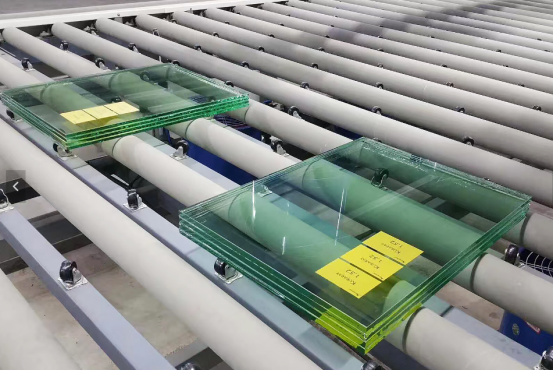Unleashing the Potential of Non Autoclave Laminating Machines in Modern Manufacturing
In the rapidly evolving world of today's glass manufacturing, the quest for more productive, cost-effective and versatile manufacturing methods never ends. Non autoclave laminating machines have emerged as a disruptive technology, offering manufacturers the possibility to break free from the limitations of traditional autoclave-based lamination methods and achieve new potential in their manufacturing processes.
Simple Installation and Setup
One of the major benefits of non autoclave laminate machine is that installation and setup are easy. Traditional autoclaves are large, complicated devices that take a great deal of planning when installed. They usually need special foundations, intricate piping systems for pressure and temperature control, and specialized electrical connections. This not only adds to the cost of initial installation, but also to the time taken to have your production line in operation. Non-autoclave laminators, on the other hand, come with a more modular and simplified design. They are easily assembled and installed within no time and do not necessarily involve sophisticated infrastructure. This makes it possible for the manufacturers to incorporate the machine into their current manufacturing facility in no time, which saves installation and time.For example, a small factory business can easily integrate a non-autoclave laminator into its production facility without much modification of the factory layout, allowing it to start production and generate revenue earlier.
Decreased Manpower Needs
Non-autoclave laminate machines can reduce manpower requirements. To operate traditional autoclave machines, highly trained technicians familiar with advanced pressure and temperature management systems are necessary. There is a time and monetary investment involved in training new autoclave lamination engineers. Non-autoclave laminators have intuitive controls and automated features. They are simple to operate, and after initial training, regular factory personnel can learn to use them quickly. Even some non-autoclave laminators have self-diagnostic systems that can identify and report possible problems, thus reducing the need for constant monitoring by highly trained personnel. Reduced manpower requirements not only reduce labor costs, but also make the production process cheaper and decrease dependence on rare professional technicians.
Enhanced Product Customization Capabilities
Non-autoclave glass laminate machines can offer enhanced product customization, which is widely required in today's market scenario where the variability of products is higher than ever. Autoclaves are usually limited by the number of products it can deal with since its process parameters are fixed. Non-autoclave laminators offer greater flexibility for making last-minute adjustments in parameters of lamination such as temperature, pressure, and lamination speed. This enables production to produce laminated products with quite different thicknesses, textures, and material combinations. For example, in furniture manufacturing, non-autoclave laminators can be used to bond distinctive decorative films with diverse finishes onto wood surfaces to meet consumers' diverse visual sensibilities. The ability to engineer products quickly and efficiently is a merit that provides an advantage to manufacturers to meet the individual needs of diverse customers and respond to evolving market demands promptly.
Environmentally friendly operation
Non-autoclave laminators make an important contribution to environmentally friendly manufacturing practices. As already indicated, they require less energy when compared to autoclaves. In addition to this, many non-autoclave laminating processes utilize solvent-free or water-based adhesives, which release fewer volatile organic compounds upon laminating. This not only reduces the amount of harm they cause to the environment, but also creates an improved working space for factory operatives. With the era where environmental sustainability becomes more important, the use of non-autoclave laminators will help producers meet strict environment regulations and enhance their corporate social responsibility image. It is also in accordance with heightened consumer consciousness towards products made from environmentally sustainable processes, possibly creating new market opportunities for companies.
Simple Maintenance and Troubleshooting
Non autoclave glass laminate machines also have simple maintenance and troubleshooting methods. Traditional autoclaves usually require regular and professional servicing because they have complex mechanical, electrical and pressure control systems. Diagnosing and repairing any failure in these complex systems is sometimes difficult and time-consuming and usually requires expert technicians. Non-autoclave laminators are much easier to service with their simpler and modular structure. For example, many non-autoclave laminating machines use standardized, interchangeable parts. If a component fails, they can easily locate it and replace it without needing to take out the entire machine. They can determine where the problem is, such as a temperature sensor or adhesive dispensing problem, so operators can correct it on the spot. This maintenance and trouble-shooting simplicity not only reduces downtime, but also reduces maintenance costs, so that the production line can continue to run smoothly.
Conclusion
In short, non-autoclave lamination can assist manufacturers in creating a broader market and producing high-quality products that can satisfy the changing needs of consumers by means of easy installation, reduced labor required, improved product customization capability, environmentally friendly operation, and simple maintenance and troubleshooting. If you are a new entrant to this industry or require upgrading your equipment, please contact us.
-

Non Autoclave Glass Laminate Machines: Shaping the Aviation Sector with High - Performance Glass for Cockpits and Cabin Windows
In the demanding aviation industry, quality and performance of aircraft material are of utmost importance.Among others, glass applied for cockpit and cabin windows must comply with stringent requirements of safety, endurance and optical performance. Non autoclave laminated glass machines have been the game-changer in this industry, upsetting the entire process of production of high-performance aviation glass.2025-04-28
-

Autoclave Free Glass Laminate Machines: Enhancing Marine Applications with Durable and Weather - Resistant Glass
The harsh and demanding marine environment brings unique challenges to the materials used in ships and offshore structures. Glass parts, particularly, need to be resistant to extreme weather conditions, seawater corrosion, and mechanical stress. Autoclave free glass laminate machines are a highly effective solution that can deliver robust and wind-resistant glass, significantly improving functionality and safety for marine applications.2025-04-25
-

Powering Auto Glass with Non Autoclave Laminate Machines
In the ever-evolving era of automobiles, the quest for innovation in material and manufacturing processes never ends. The craft of glass component production has evolved significantly. Non autoclave laminate machines enable the manufacture of light and very secure glass components with the stringent requirements of modern automobiles.2025-04-24
-

Autoclave Free PVB Laminating Machines: Meeting the Demands of Modern Architecture
In the dynamic field of modern architecture, the pursuit of innovation, functionality and beauty has redefined the standards of building materials. As the cornerstone of contemporary architecture, glass now not only has to assume structural functions, but also needs to take into account energy efficiency and visual beauty. As a machine for glass processing, the autoclave free pvb laminating machine suits the diverse and demanding needs of modern construction projects.2025-04-23









